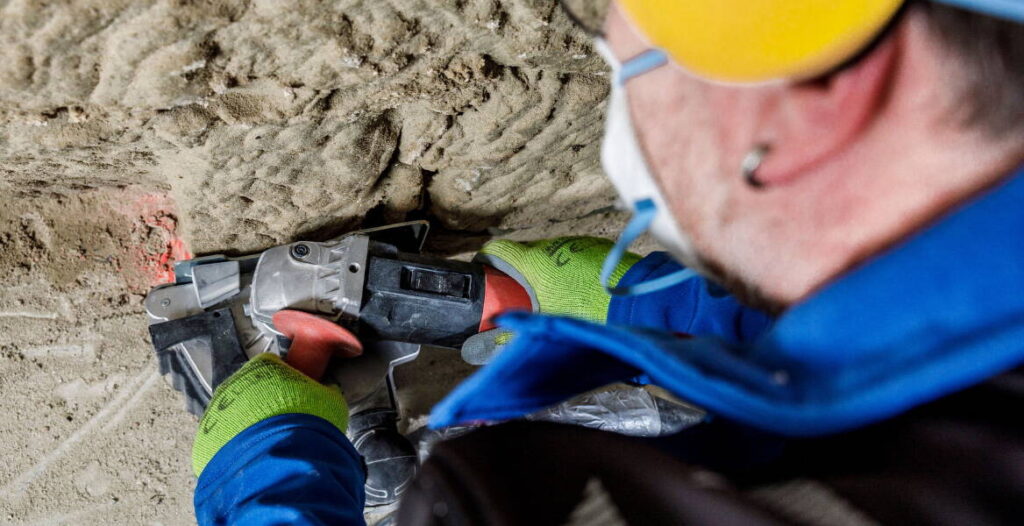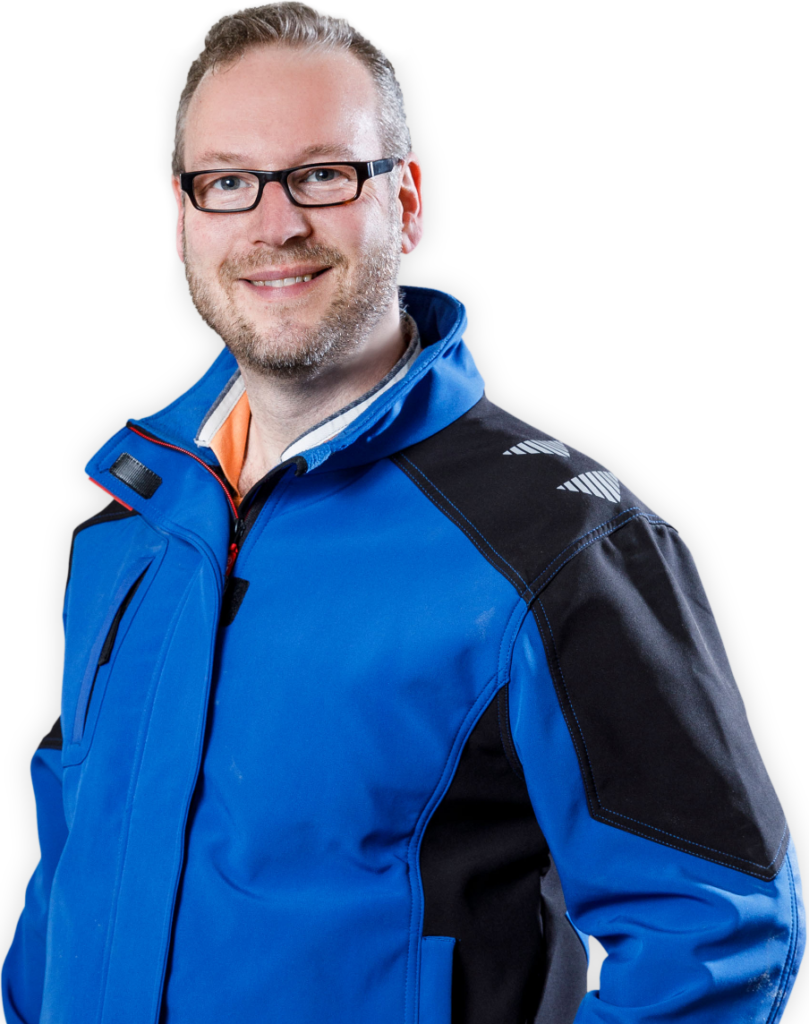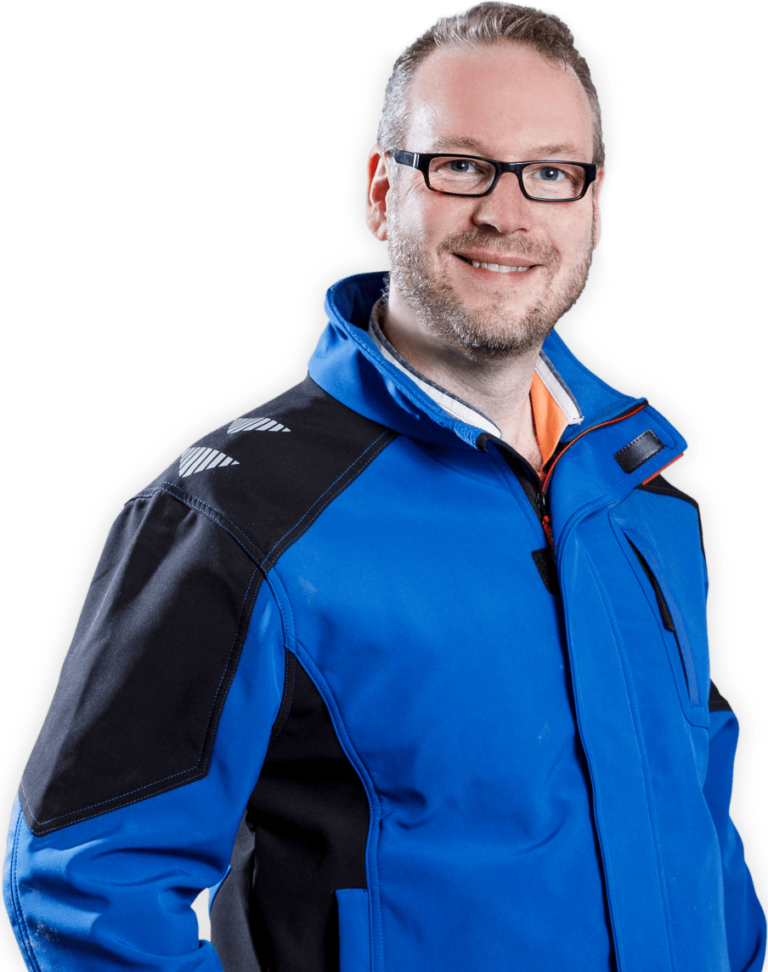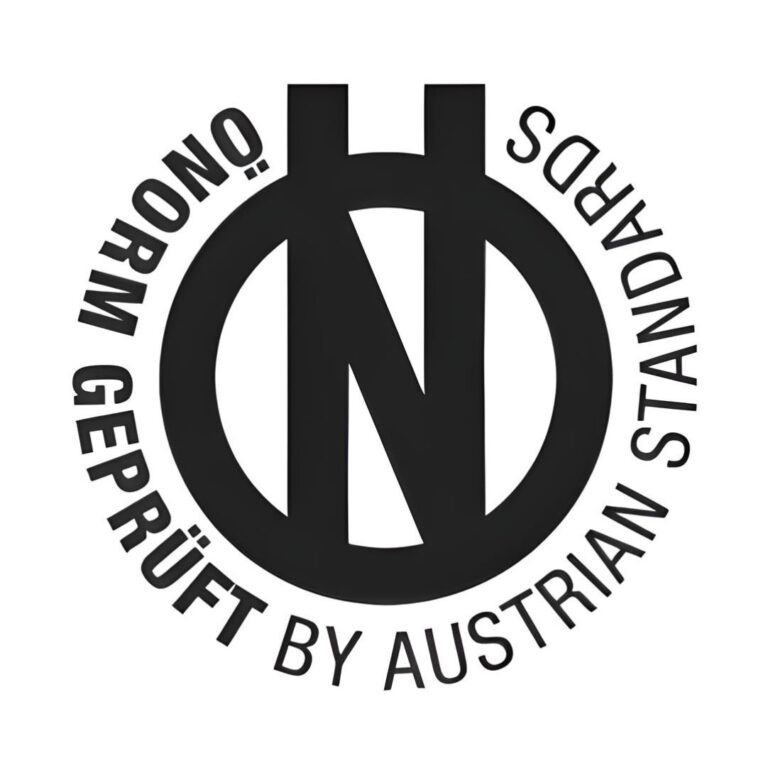Basement drying
We have been dehumidifying cellars for over 10 years. Both the DRYMAT® system for electrophysical drying and our approach are ÖNORM-certified.

Homepage › Basement drying
Cellar drying from the inside
When it comes to «basement dehumidification», most people mistakenly think of powerful building dryers. While dehumidifiers are well suited for drying out the building fabric immediately after water damage, they can, on the other hand, lead to an intensification of the moisture problem in the medium term in damp old buildings and cause lasting damage to the building fabric.
How does it happen? The actual cause of damp walls is usually neither the moisture nor the leakage of the walls, but physical properties of the building fabric, which cause the wall to absorb the moisture.
The rapid drying of the walls using a construction dryer increases the salinization of the wall. As a result, the cellar wall absorbs even more moisture, allowing more mineral salts to enter the building fabric. Some of the moisture evaporates on the inside, causing the dissolved salts to crystallize and increase in volume. Over time, this leads to flaking and lasting damage to the building fabric.
Electrophysical cellar drying with the DRYMAT® system induces a positive electrical potential in the wall, this effectively protects the wall from rising damp. The residual moisture in the wall evaporates within 0.5 and 3 years - the building becomes dry down to the bottom of the floor. Contact us without obligation.
Our services
- Identification and analysis of the causes of moisture
- Electrophysical basement dehumidification with the DRYMAT® system
- Intelligent basement ventilation to accelerate the drying process
- Moisture measurement 6 months after installation
Your advantages
- Advice from experienced moisture experts
- Drying of the building substance down to the basement floor
- Guaranteed success thanks to ÖNORM-tested process
- Cost transparency as a matter of course

Contact us without obligation
Do you have any further questions or may we prepare an offer for you?
Get in touch with us without obligation. We look forward to your inquiry!
Get in touch with us without obligation. We look forward to your inquiry!
Tobias Bayer
Managing Director

Questions & Answers
- General
- Costs
- Functionality
- Application area
- Implementation
What is the approximate cost of basement dehumidification?
Electrophysical cellar dehumidification with DRYMAT® costs approx. 15,000 to 20,000 EUR for a house with a floor area of 60 m². This is only a guide value, which can vary greatly in individual cases depending on our actual expenditure. Contact us without obligation for an individual offer.
What consequential damage can occur with damp building fabric?
Potential consequential damages of damp building fabric are increased heating costs, uncomfortable room climate, musty smell as well as mold and health problems for the inhabitants of the house. Over time, damp walls lead to lasting damage to the building fabric and thus gradually reduce the value of a property.
Does electrophysical basement dehumidification succeed in every case?
Yes, both the DRYMAT® system and our approach to its application are ÖNORM-certified. However, before we can use the system, we have to carry out a detailed analysis of the causes of moisture and the condition of the building fabric. If it is a pressing source of moisture or if there are cracks or major damage to the building envelope, the DRYMAT® system can only be used as a supplement.
Why basement dehumidification from Haustrocknung.de?
Electrophysical cellar dehumidification with DRYMAT® is an active process that permanently dries damp walls down to the cellar floor. Our process is ÖNORM-certified and does not involve any risks in terms of building statics, the environment or health.
How much does cellar dehumidification cost?
The cost of electrophysical cellar dehumidification with the DRYMAT® system for a house with a floor area of 60 m² is approx. 15,000 to 20,000 EUR. This is only a rough estimate and can vary greatly in individual cases depending on the actual cost. Ask us for an individual offer without obligation.
What factors does the price depend on?
The price depends on the following factors: Length and accessibility of the walls, material of the walls, requirements for aesthetics, duration of the journey.
What are the annual electricity costs?
The DRYMAT® system incurs electricity costs of around EUR 50 per year. These costs are primarily due to the consumption of the DRYMAT® control unit. Only an electrical potential is induced in the wall.
How long does the DRYMAT® system warranty last?
We grant a 10-year guarantee on the DRYMAT® system.
Why do damp basement walls occur?
In most cases, the walls of the affected objects have structural properties that cause them to absorb moisture, similar to a sponge. This effect is promoted by the negative electrical landing of the walls. More on this in the «Damp walls» guide
How does electrophysical basement dehumidification work?
By installing the DRYMAT® system, we ensure that the walls have a positive electrical potential in relation to their surroundings. This means that the wall can no longer transport moisture upwards. This protects the walls from moisture.
What are the advantages of basement dehumidification by electroosmosis?
Electro-osmosis actively affects the moisture in the wall and is therefore able to dry out damp walls and floor slabs down to the base of the foundation. In contrast to most methods, electro-osmosis does not require any sensitive chemicals and is harmless to people and the environment.
What is there to consider in basement dehumidification?
Correct identification and mitigation of the cause of moisture is crucial to the success of cellar dehumidification. In particular, building dryers should only be used for a short time, as moisture and salts could be drawn in from outside. This increases the salt concentration and can permanently increase the moisture content of the masonry. More on this in the guide «Dehumidify basement»
When can DRYMAT® be used?
The DRYMAT® system works effectively on damp walls due to a non-pressing source of moisture, such as seepage water. It also effortlessly copes with heavily damp walls in which the moisture has risen over several meters.
Where can electrophysical wall dehumidification not be applied?
DRYMAT® is not suitable for drying buildings after water damage. Furthermore, the DRYMAT® system cannot be used if there is a pressing source of moisture, such as an adjacent water vein or if the building envelope has cracks or holes through which water penetrates.
Can DRYMAT® be used on any building material?
Yes, DRYMAT® can basically be used on all building materials - including quarrystone walls or masonry made of vapor-tight clinker bricks, where moisture can rise through the joints. However, the moisture must have a way out of the building structure. We initially examine carefully whether this requirement is met.
Can you guarantee the results of DRYMAT®?
Yes, the DRYMAT® system and the procedure for using it are ÖNORM-certified. When we use it, we guarantee its results, which we can prove in periodic measurements.
How long does electrophysical basement dehumidification take?
After installation of the DRYMAT® system, the drying process takes between 0.5 and 3 years. This can be accelerated with intelligent basement ventilation. The installation of the DRYMAT® system takes approx. 3 - 5 working days for a house with a floor area of 60 square meters.
How does the installation of the DRYMAT® system proceed?
First, we drill holes for the electrodes. Secondly, we mill narrow slots for wiring the electrodes for the DRYMAT® system. Thirdly, we install the electrodes and connect them to the control system. Fourthly, we test the installation and put the system into operation. Then we plaster the slots of the installation.
How high is the noise and dirt pollution during assembly?
During the drilling and milling work, it is relatively noisy in the rooms concerned. Only a little dust is generated, especially since we use industrial vacuum cleaners with dust extraction hoods for drilling and milling.
Does the system switch off automatically after drying is complete?
No, if you turn off the system, moisture can again rise into the building fabric, which would not be useful.
J. F. from Bern says:
«The DRYMAT® works trouble-free, reliably and completely noiselessly. One would almost forget about the wall drying system if it weren't for this remarkable increase in living comfort.» ➝ other references
Cost of basement dehumidification
The DRYMAT® electrophysical drying system costs around EUR 15,000 to 20,000 for a detached house with a floor area of 60 m², for example. This includes the entire processing of the order, including analysis, installation and follow-up measurements. Operating costs of around EUR 50 per year are also included. No maintenance work is planned. At your request, we will be happy to visit you to carry out a follow-up measurement.
In contrast, draining very damp walls in the same detached house, for example by draining the basement walls, costs around EUR 45,000 - 60,000. This mainly depends on the cost of earthworks if the renovation is to be carried out from the outside. Waterproofing in the narrower sense costs around EUR 350 per square meter in addition to the renovation.
You can find more info in the guide «Dehumidify basement».
Order processing
- Initial telephone consultation: After you have contacted us using the registration form, we will call you for an initial consultation with our building experts, during which we will try to classify the extent and type of moisture damage. We will show you what options we can offer to rectify the damage.
- On-site analysis: If interested, we analyze the damage in a second step on site at the affected property. For this purpose, we carry out measurements to identify the cause of the moisture as precisely as possible.
- Expert opinion / quotation: We then prepare either an expert opinion or a quotation for you. On the basis of the quotation, you decide whether you want a renovation. The installation of the DRYMAT® system takes approx. three working days for an average detached house.
- Installation of the DRYMAT® system: We anchor electrodes in the damp masonry and in the floor and mill narrow slots in which we then lay the cabling. The milling work causes noise in the cellar. However, there is very little dust, especially as we only mill with an extractor hood and industrial vacuum cleaner.
- Post-measurement: We then install the control unit and connect it to the power supply (230 V). Finally, we plaster over the slits so that nothing of the dehumidification system is visible apart from the control unit. On request, we can carry out one or more periodic follow-up measurements after the renovation.

